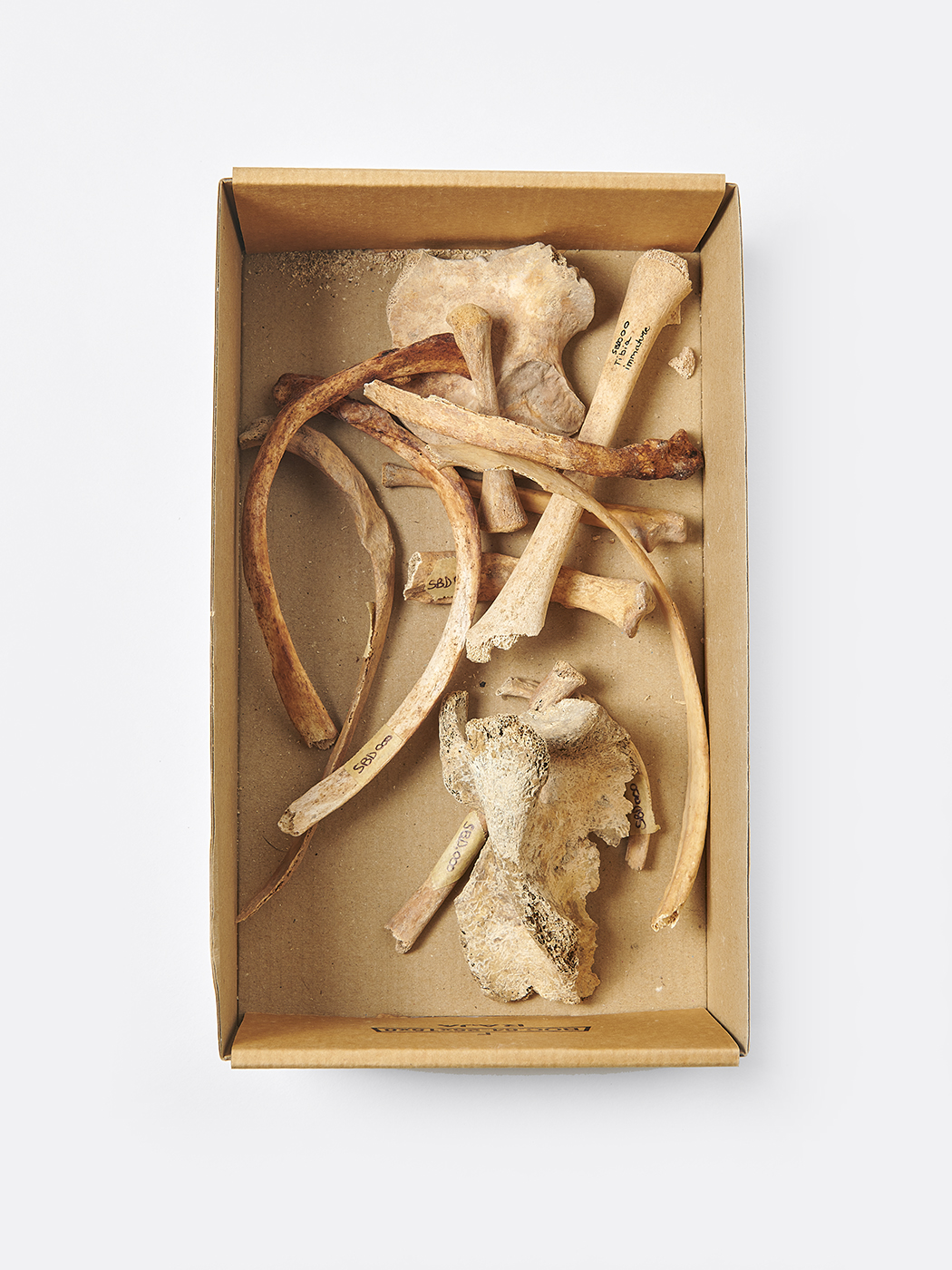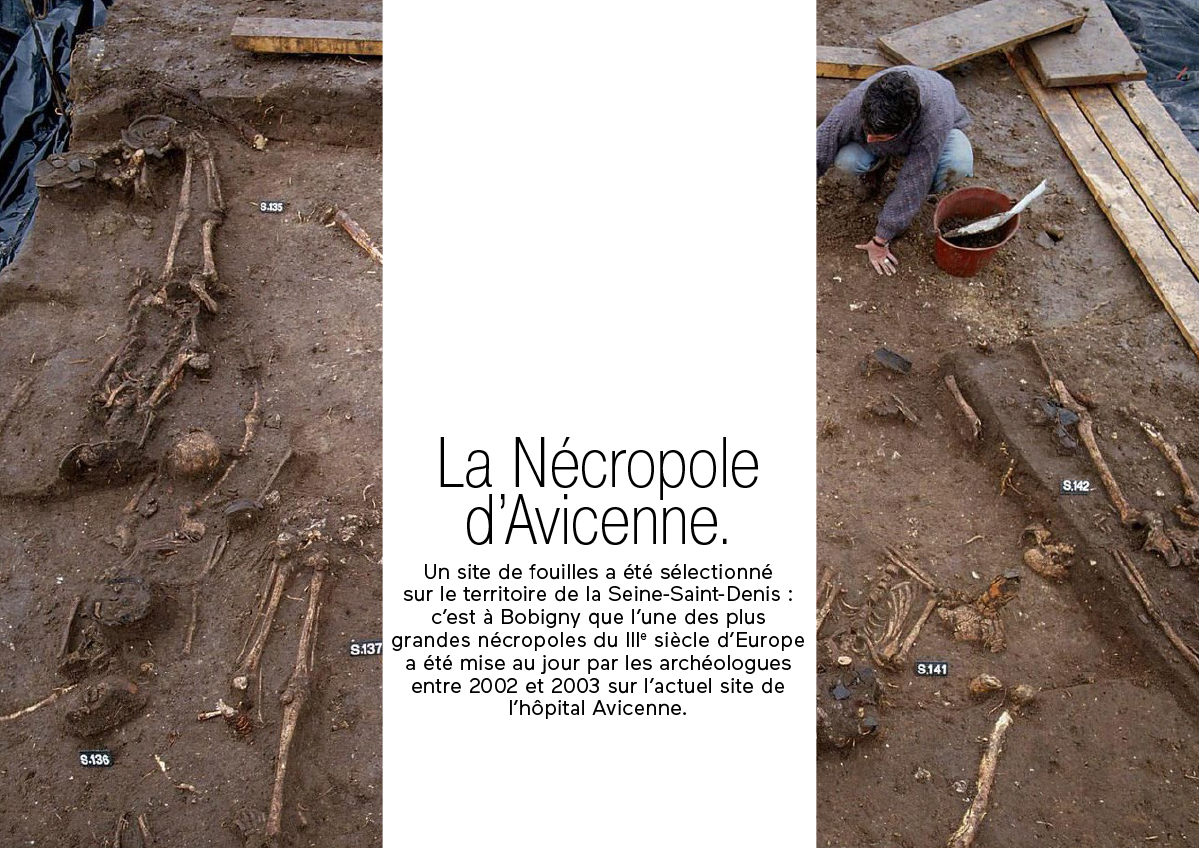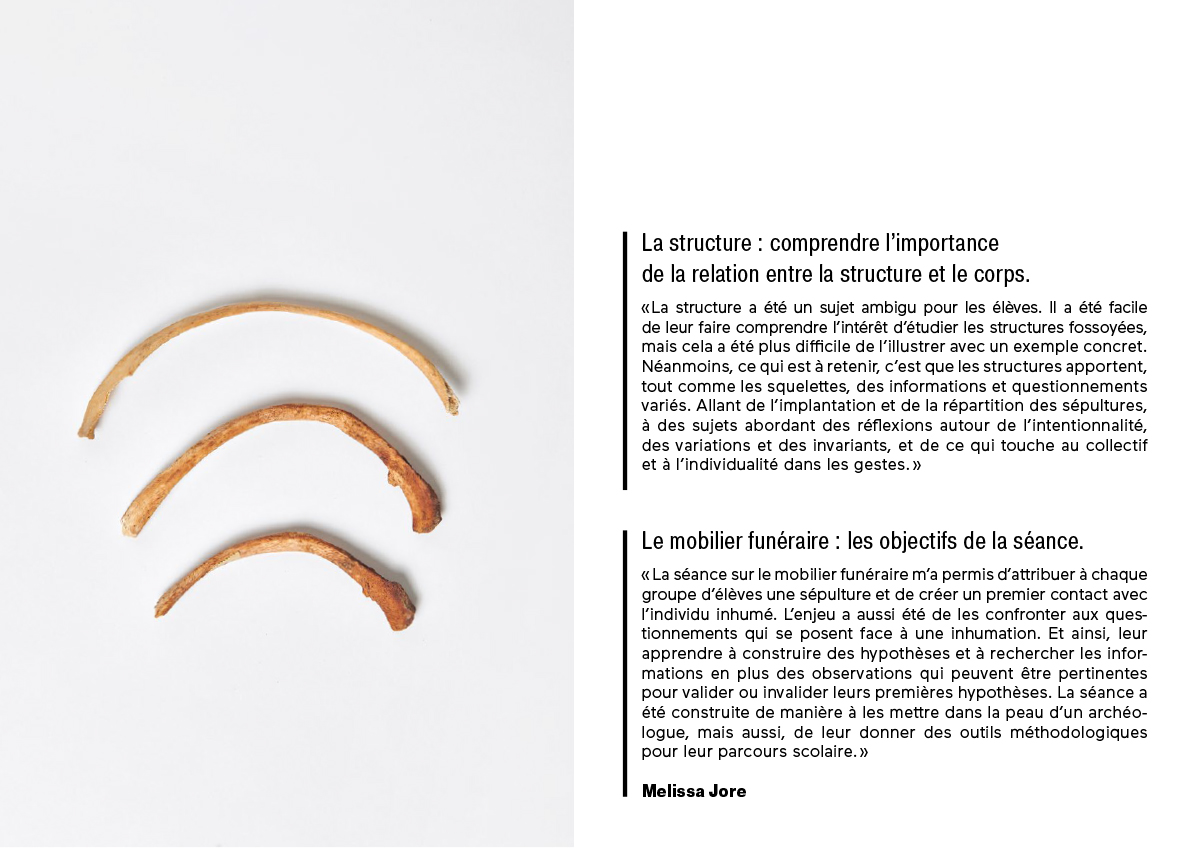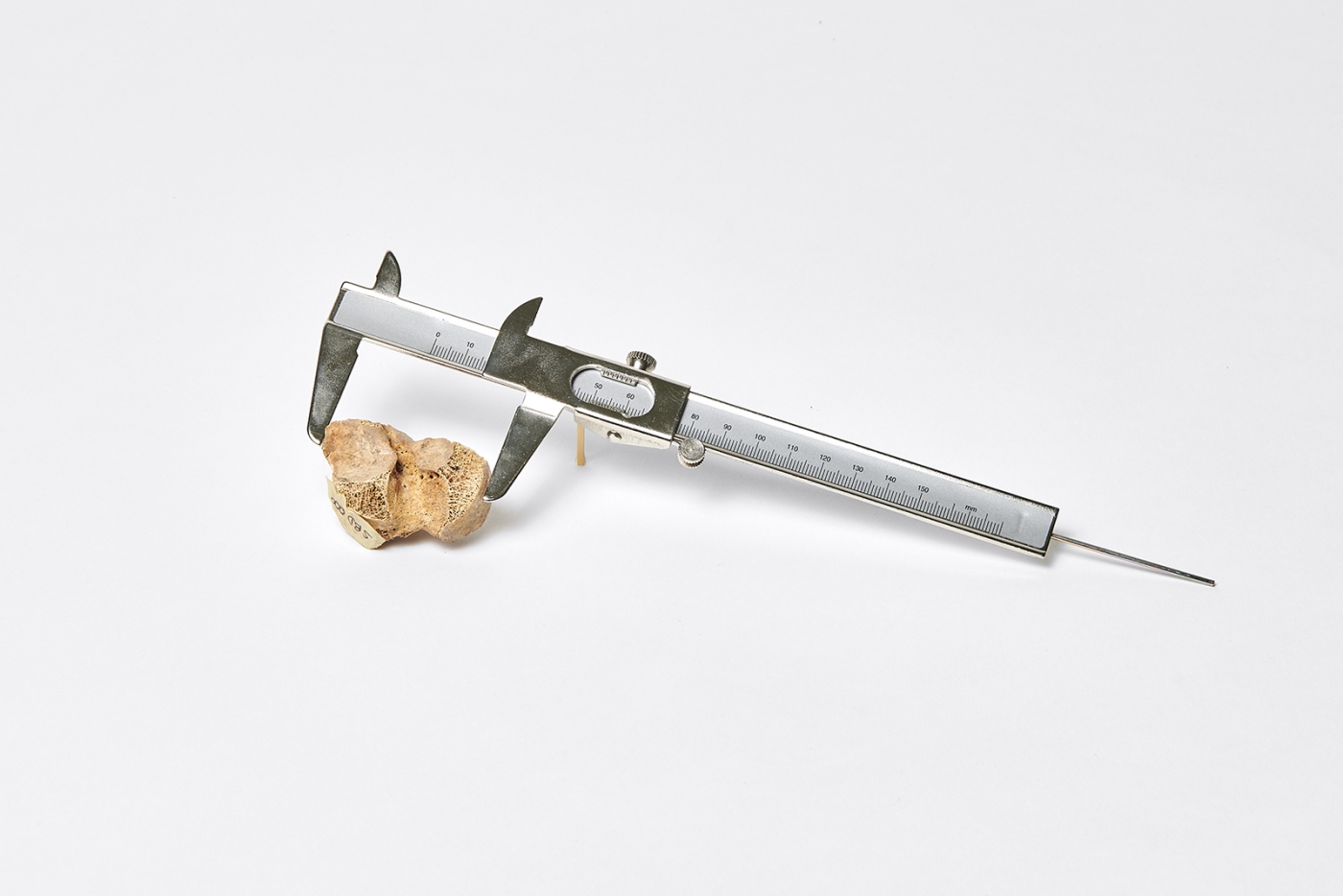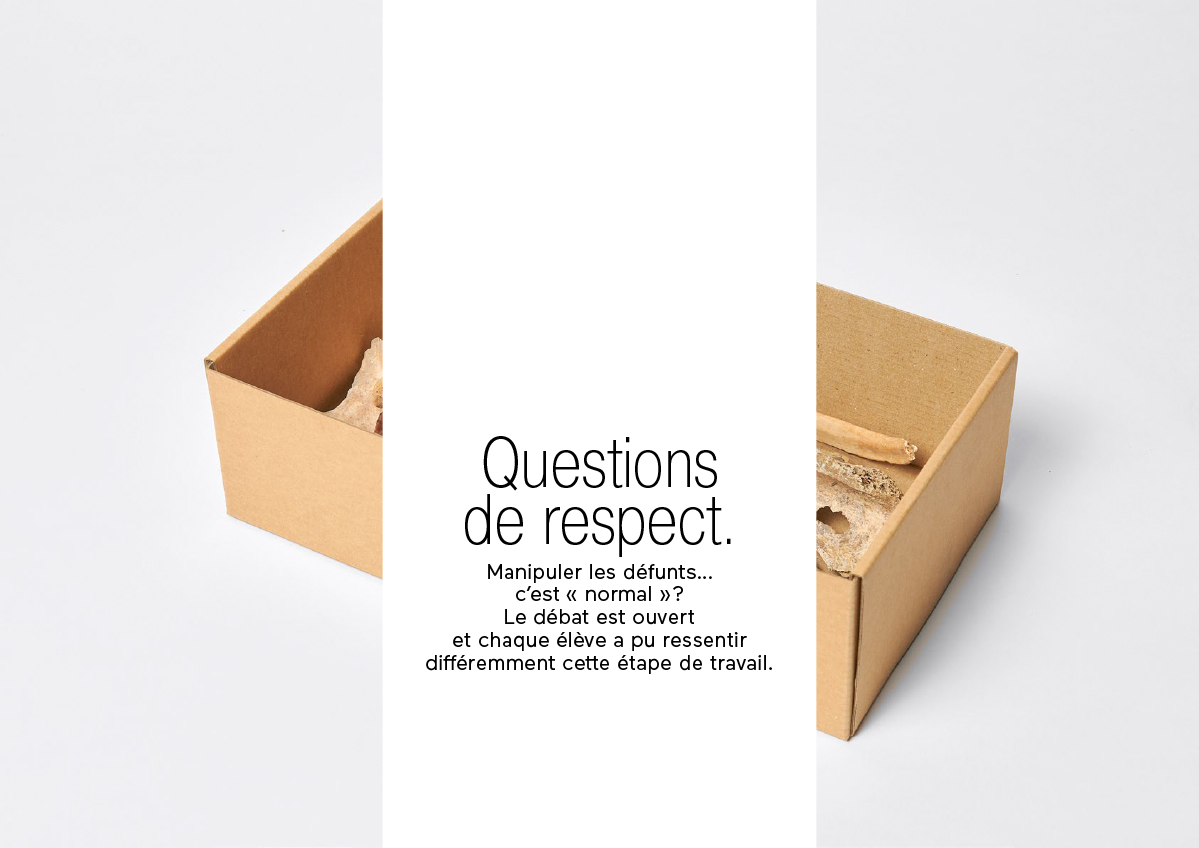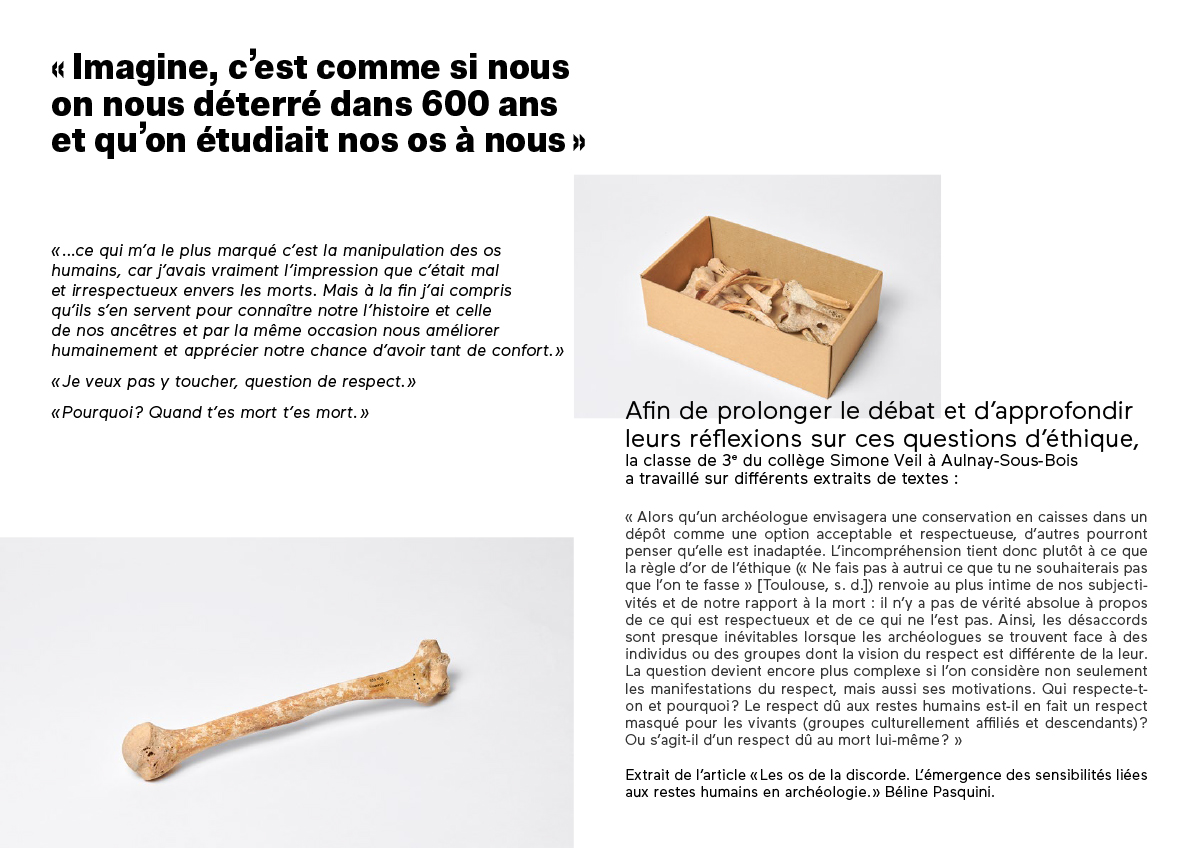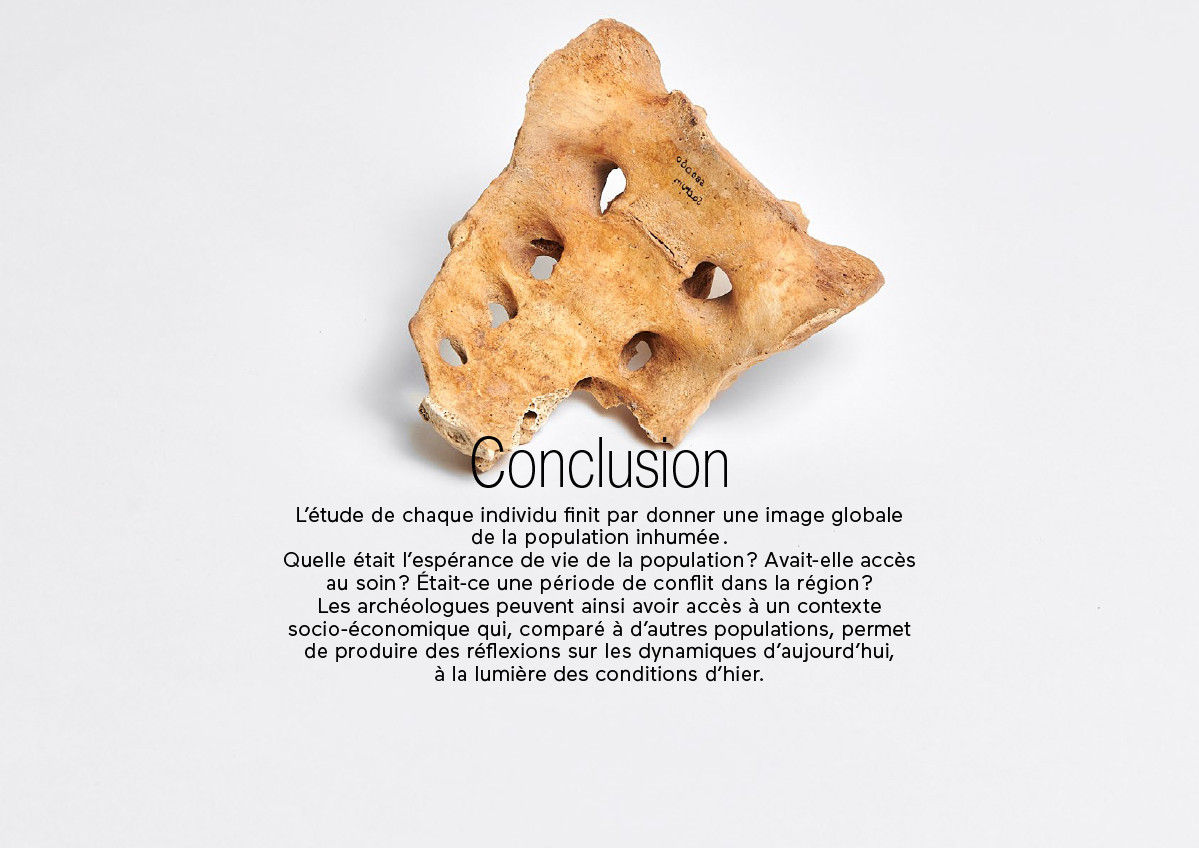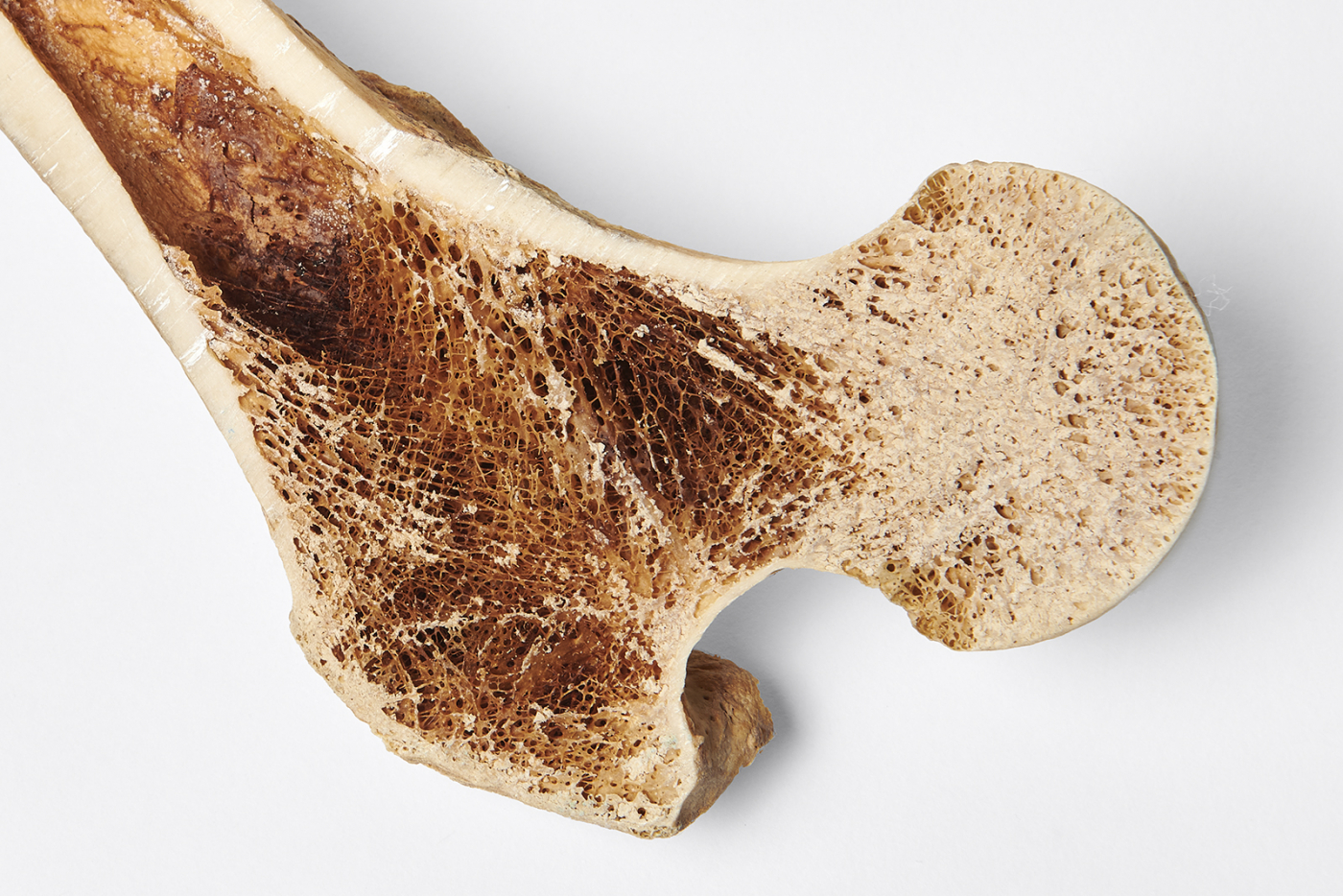Ghost Populations
Since 2009, the Seine-Saint-Denis County Council has been backing “la Culture et l’Art au Collège (CAC)”. This project is based to a large extent on the presence in class for several weeks (40 hours) of an artist or scientist whose mission is to engage the students in a process of research and creation.
Contributors:
Archaeologists
Project Manager:
Lucille Negre
Objectives:
Patiently reconstructing the lifestyles of individuals and populations by studying their graves is the task of funeral archaeologists and is also the objective of this project. An excavation site was selected in the Seine-Saint-Denis area – in Bobigny, the biggest necropolis of 3rd century Europe was unearthed between 2002 and 2003 on the site of the current Avicenne Hospital. The students are given special access to the excavation collection, which they analyse, going to-and-fro between the classroom and the laboratories in order to reveal a profile of the buried population.
Workshops:
Six feet under
The students visit the laboratory to analyse the funerary artefacts discovered during the excavation: steles, tombs and objects placed next to the deceased. Back in the classroom, using maps and surveys, they analyse how space in the necropolis was organised (distribution and alignment of the graves, the direction and position of the deceased). Examined together, these elements reveal how the dead were treated and the funeral rites that were practised.
Old bones
Studying bones gives us more information about the identity of the deceased. Age, gender, eventual pathologies and cause of death are all information that can be gleaned. In class, the contributor shows how pelvic bones indicate the individual’s gender while his/her age can be estimated by observing the bones’ growth. In the laboratory, the class discovers the precision of dating technology. Studying each individual eventually gives an overall picture of the population.
What the dead can tell us
It is then time to turn to the tools of paleodemography: when we cross-reference data from studying the material with biological studies, we obtain a statistical basis that highlights the characteristics of the population studied. The students must put forward hypotheses using this database: what was the population’s life expectancy? Did the people have access to medicine or treatment? Was it a period of conflict in the area? The students then have a socioeconomic context that, compared with other populations, enables them to discuss the dynamics of today in the light of yesterday’s living conditions.
Participating Schools:
- PABLO NERUDA, GAGNY
- SAINT EXUPÉRY, NOISY LE GRAND
- JEAN DE BEAUMONT, VILLEMOMBLE
- SIMONE VEIL, AULNAY SOUS BOIS
Photos:PIERRE ANTOINE
